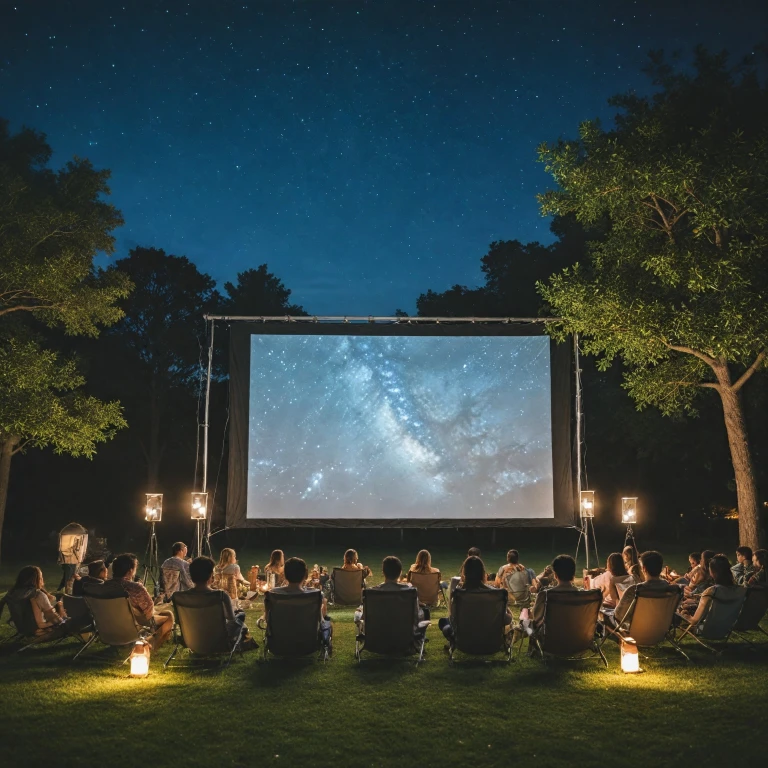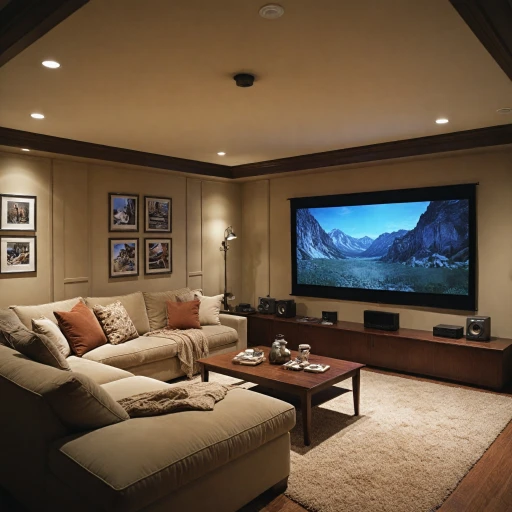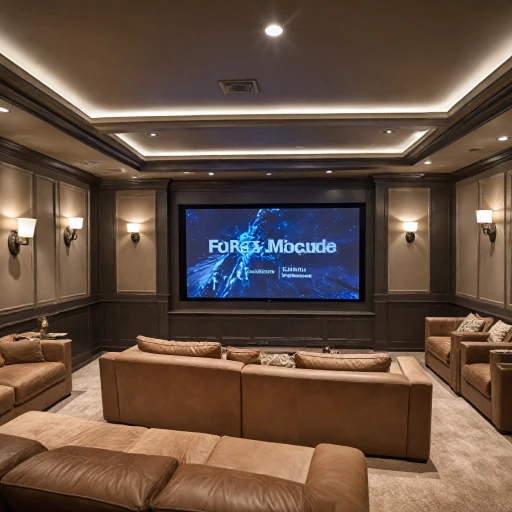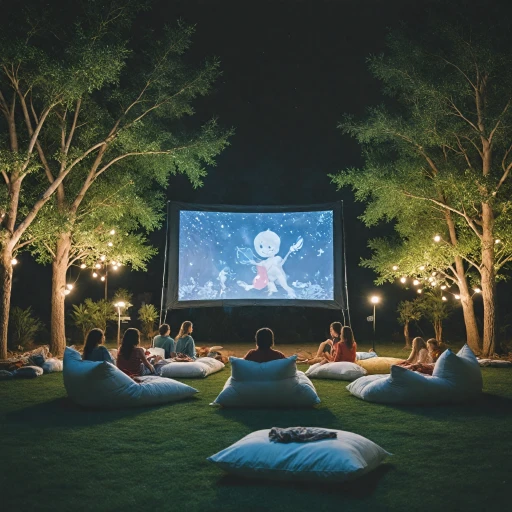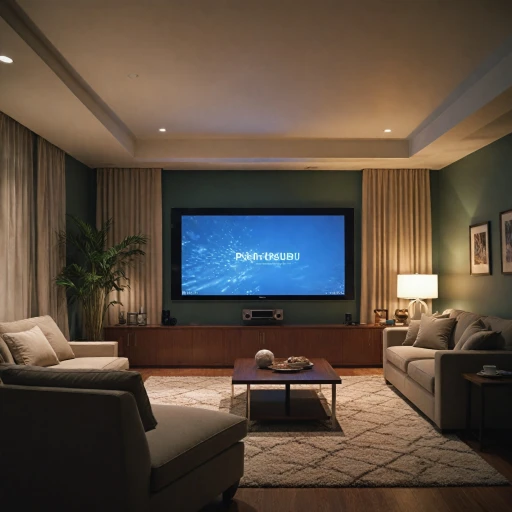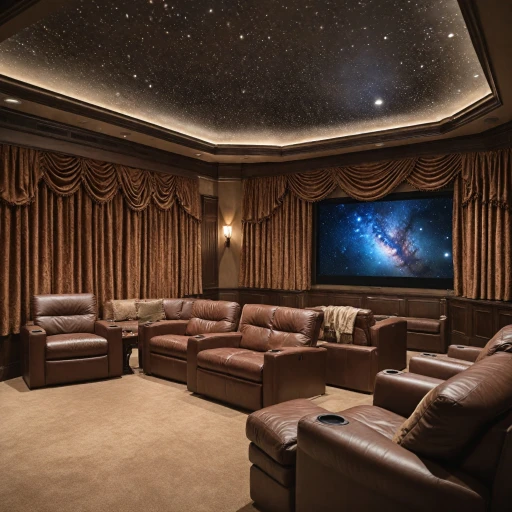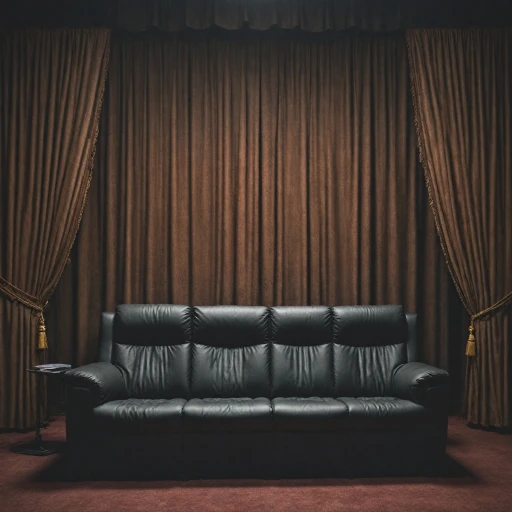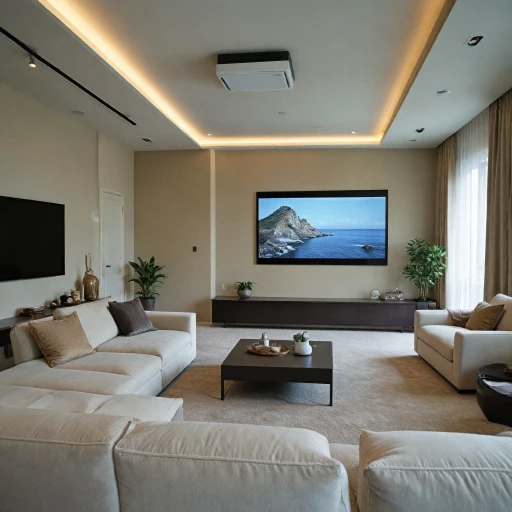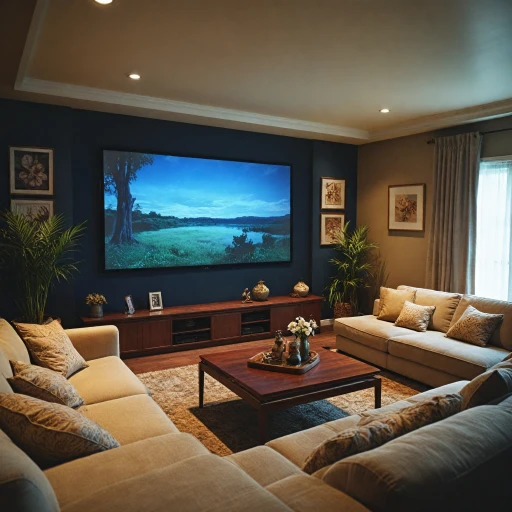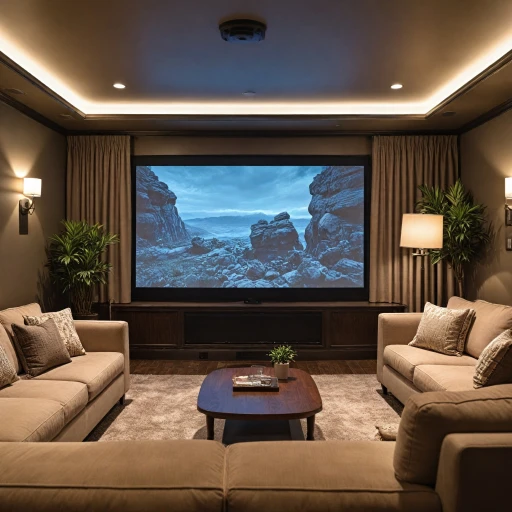Understanding the Benefits of a Massive Projector Screen
Unleashing the Cinematic Experience at Home
Picture this: the lights are dimmed, you settle into your cozy couch, and a massive projector screen unfurls before your eyes, transporting you into a world of cinematic wonder. A large projection screen offers unparalleled excitement, turning any viewing into an immersive experience.
Why Size Matters
The sheer size of a projection screen adds a captivating dimension to home entertainment. A larger screen maximizes detail visibility, enhancing the overall experience of high-definition content. With options like ALR (ambient light rejecting) screens or fixed frame screens, you can optimize viewing in diverse lighting conditions.
- Increased detail and depth with larger inch screens.
- Experiencing life-size projections enhances realism.
- Exceptional for group viewings and sports enthusiasts.
Choosing the Right Material and Gain
The material of your screen is pivotal. Whether you opt for a matt white surface or high-gain projector screens, it affects image fidelity and clarity. You can choose fixed frame screens for a permanent setup or motorized screens for versatility.
- Matt white surfaces for neutrality and broader viewing angles.
- Choose the gain based on brightness needs and room light conditions.
Customizing Your Setup
Projection screens come in various sizes and styles, including elite screens designed to meet specific needs. Consider factors like ambient light conditions, aspect ratio, and space dynamics while setting up your screen.
For those interested in exploring outside setups, crafting your own outdoor projector screen opens a whole new world of cinematic opportunities. Learn how you can create an outdoor cinematic experience here.
Choosing the Right Projector for Your Screen Size
Matching Your Projector to Your Screen's Needs
Choosing the right projector is crucial for maximizing your viewing experience with a massive projector screen. Understanding the relationship between your projector and screen size is essential to achieve the best image quality.- Screen Size and Projection Distance: If you're aiming for a 100-inch or larger screen, you'll need projectors that can handle this size without image distortion. Consider investing in a projector with a higher gain projector to ensure the images remain bright and vibrant on such a large surface.
- Types of Projectors: Short throw and ultra short throw projectors are ideal for large screens in compact spaces. These items allow you to position the projector closer to the screen, minimizing the casting of obtrusive shadows.
- Aspect Ratio and Resolution: When investing in a projection setup, ensure your projector supports the same aspect ratio as your chosen screen. A mismatch can lead to unused screen space and lower image quality.
- Material and Surface Considerations: Some screens, like the ALR screen, are designed to optimize performance in ambient light conditions, maintaining picture clarity and contrast. Matching your projector to suit a matt white or ALR surface can ensure you get the most out of your equipment.
- Price and Brand Considerations: While elite screens often come with a higher price tag, many users believe the investment is worthwhile for their performance. However, evaluating verified purchase reviews is recommended for insights on various products.
- Motorized and Fixed Frame Screens: Your installation choice, be it a motorized or fixed frame screen, can affect your projector selection. This aspect influences setup complexity and possibly even your projector's mounting options.
Setting Up Your Home Theater Space
Transform Your Living Room into a Cinema Haven
Creating the perfect home theater space involves careful consideration of several factors. When setting up your environment for a massive projector screen, it's essential to consider the characteristics of your room, the placement of equipment, as well as the integration of technologies to maximize your viewing experience.- Room Dimensions and Setup: Start by evaluating your room dimensions, keeping in mind that a large screen requires adequate distance to accommodate the throw projectors effectively. Consider the screen's aspect ratio and ensuring your seating arrangement provides an unobstructed view of the screen.
- Choosing the Right Screen Type: Depending on your lighting conditions, select a suitable projection screen. For rooms where ambient light is present, an ALR screen can improve contrast and color saturation significantly. These screen innovations capture projector light while rejecting ambient light, providing vibrant images even in brighter environments.
- Mounting Options: Whether you opt for a fixed frame or a motorized screen, ensure it complements your room aesthetics. A fixed frame projection screen offers a sleek look, while motorized projector screens provide flexibility and ease of use.
- Acoustic Considerations: Add acoustic panels to minimize sound echo, securing a cinematic sound experience. The location of these elements can significantly impact the auditory quality of your projector setup. Make sure your speaker setup aligns with the screen’s position to create a seamless audio-visual experience.
- Choosing Support Systems: Enhance your projection journey by identifying the best placement options for your projector. If using a short throw or ultra short throw projector, ensure it’s positioned correctly to align perfectly with your screen’s size and gain projector positioning.
- Budget-Friendly Tips: Careful selection of projector screens and their features, like gain and surface type can maximize performance while considering your budget. Brands like in-home theater setups offer products with a good price to performance ratio without compromise on quality.
Optimizing Picture Quality on a Large Screen
Enhancing Image Quality on Expansive Surfaces
Achieving optimal picture quality with a massive projector screen requires careful consideration of equipment and adjustments. While the right projector plays a significant role, there are several techniques to maximize your viewing experience.- Choose the Right Projector Type: Short throw and ultra short throw projects are ideal for large screens in smaller spaces. They provide high-quality images from a minimal distance, reducing the need for a vast room.
- Consider the Projector Screen Material: Materials like matt white with gain projections can enhance image brightness and clarity. ALR screens are particularly beneficial in rooms with ambient light, as they help maintain vivid imagery by absorbing excess light.
- Optimize the Aspect Ratio: Match your projector's aspect ratio with your screen to eliminate distortion or cropping of images. This alignment ensures that films and shows displayed are true to their intended form, enhancing the cinematic magic.
- Fine-tune Image Settings: Most projectors come with adjustments for brightness, contrast, and color settings. Experiment with these until you achieve an image that looks vibrant and natural on your chosen screen surface.
- Ensure Proper Framing: A fixed frame screen ensures consistent tension, reducing wrinkles and image distortion. Tab tensioned screens are an alternative that remain taut, even if motorized, delivering a seamless image experience.
- Regular Calibration: Over time, projectors and screens may go out of calibration. Regular maintenance checks can ensure colors remain accurate and images sharp, thereby enhancing prolonged viewing satisfaction.
Sound Considerations for a Large Screen Setup
Sound Considerations for a Truly Immersive Experience
Incorporating a massive projector screen into your home theater setup is only half the magic; the sound quality is equally crucial to an immersive viewing experience. A large screen demands an audio system that can keep up with its visual prowess, and there are several elements to consider.- Audio System Compatibility: Ensure that your speakers and sound system are compatible with the screen size and type. An inch projector screen deserves a sound system that complements its size, filling your space with rich and full audio.
- Sound Clarity: It's essential to have a clear and crisp sound that suits the size of the room and the dimension of your projector screen. Short throw projectors, for example, can create sound reflections if not properly planned in acoustic setups.
- Positioning Your Speakers: Position your speakers to enhance the view and audio experience. Consider the placement of floor-standing speakers or a soundbar, ensuring they are at a level where the sound can effortlessly reach all areas of your screening room.
Maintenance and Care for Your Projector and Screen
Giving Your Projector and Screen a Longer Lifespan
Maintaining your home theater setup ensures that both your projector and screen provide optimal performance for years to come. Here are some essential tips to help you take care of these items effectively:- Regular Cleaning: Dust build-up can affect both the image quality of your projector and the look of your screen. Use a soft, lint-free cloth to gently wipe the surfaces. For projector screens, particularly ALR or elite projector screens, check the manufacturer's guidelines for proper cleaning solutions to avoid damaging the screen surface.
- Proper Ambient Light Reduction: Excessive light from windows or other sources can cause strain on projectors, resulting in a shorter lifespan. Consider investing in black-out curtains or using an ALR screen to reduce light interference and enhance projection quality.
- Projector Lamp Care: The lamp is a crucial part of your projector and can be costly to replace. Follow the manufacturer's recommendations for warm-up and cool-down cycles to prolong lamp life. Some projectors offer a "lamp save mode" that can help extend usage.
- Monitor Usage Time: Keep track of the hours you use your projector. Most projection units have a lamp hour counter; ensure you don't exceed the recommended time to avoid premature burn-out.
- Screen Handling: For fixed frame screens or motorized screens, ensure they are correctly installed and handled delicately. Keeping finger oils and marks off the screen surface is crucial for clarity and performance.
- Smooth Operation: For motorized screens, regularly check the motor function and ensure the mechanism is operating smoothly. If mechanical issues occur, consulting professionals can prevent further damage.
